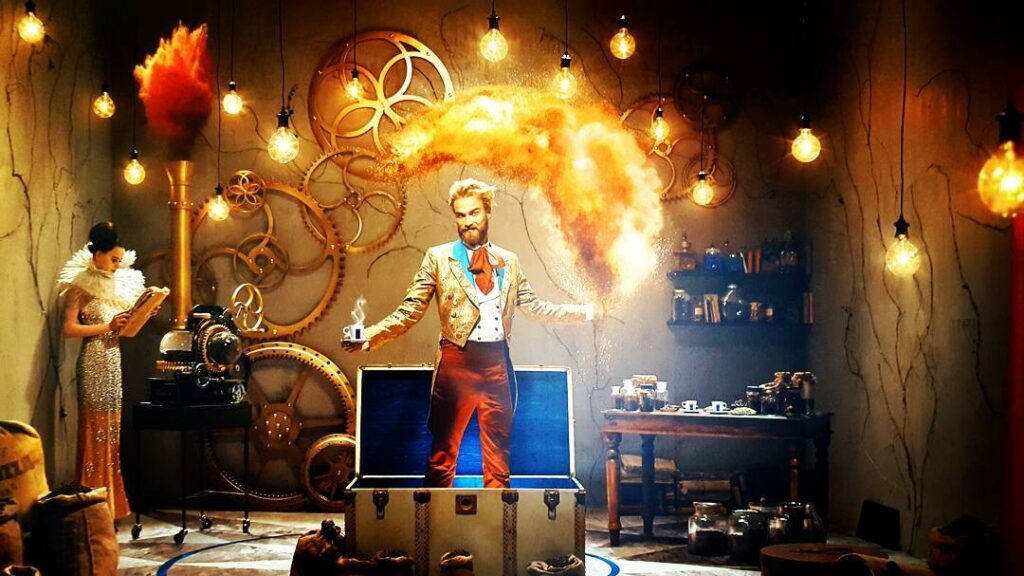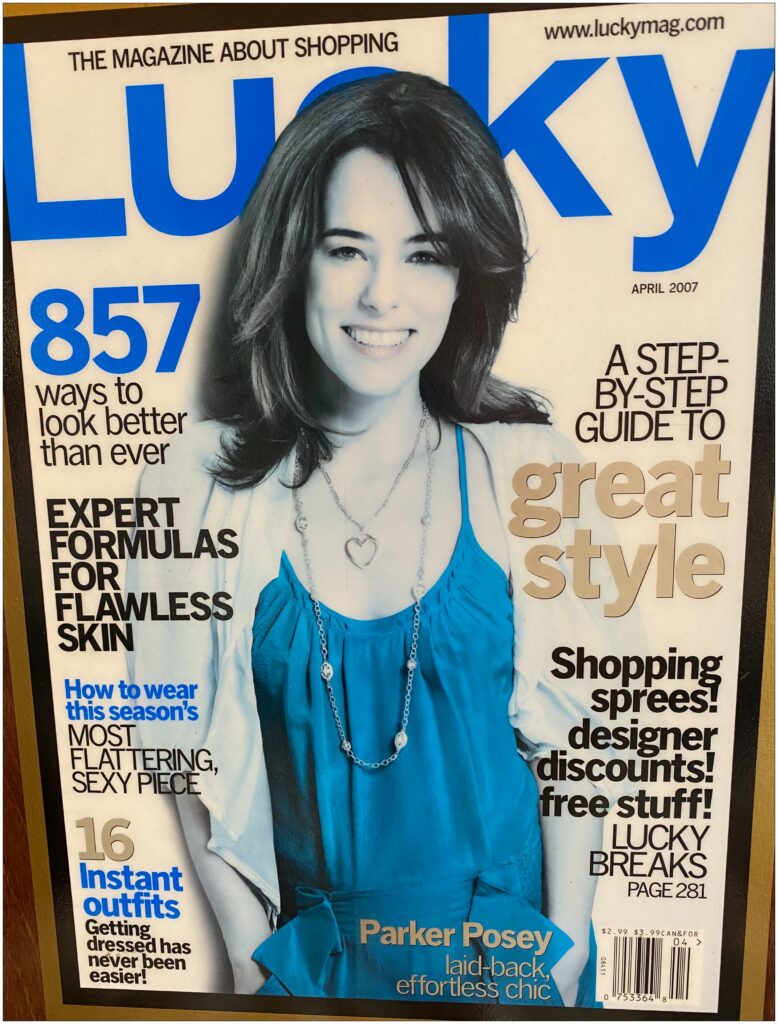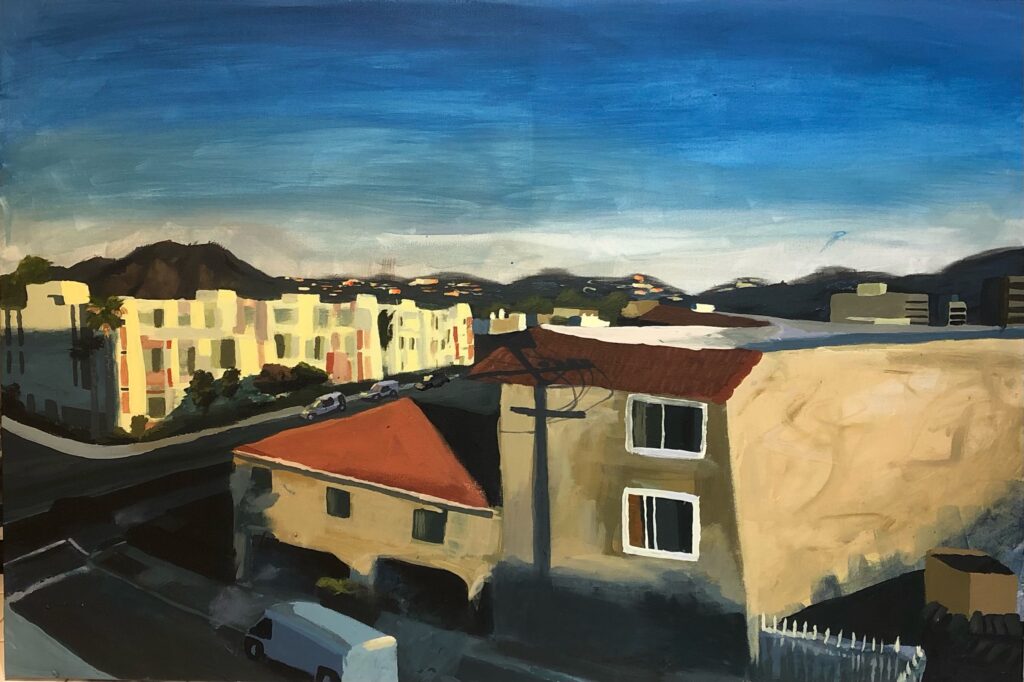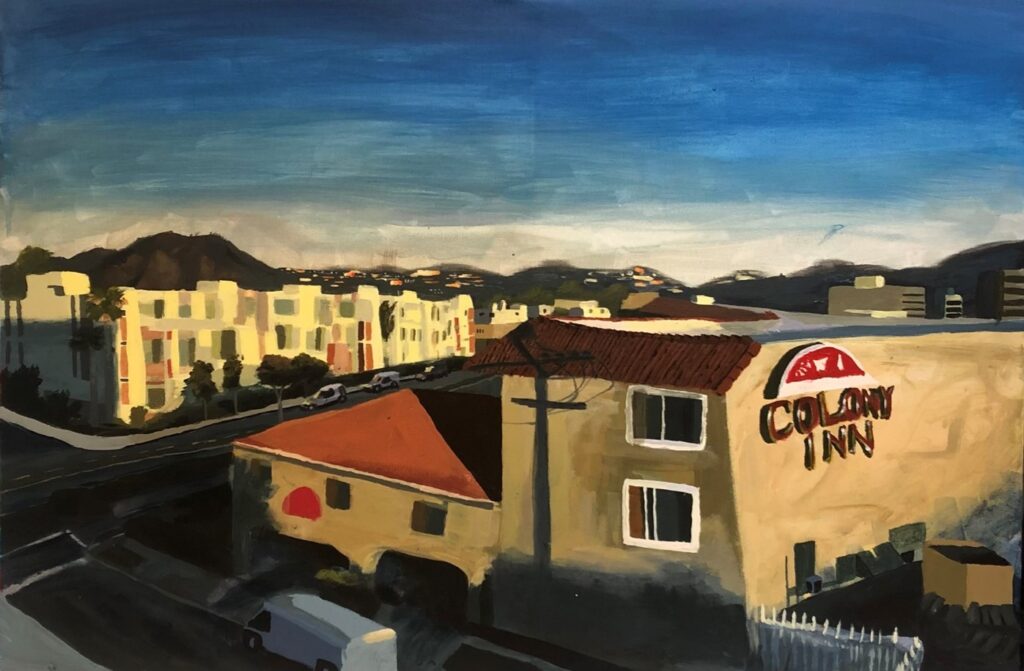by Kerrin Ross Monahan

Death in Venice (1911) by Thomas Mann, is a story that deals with mortality on many different levels. There is the obvious physical death by cholera, and the cyclical death in nature: in the beginning it is spring and in the end, autumn. We see a kind of death of the ego in Gustav Aschenbach’s dreams. Venice itself is a personification of death, and death is seen as the leitmotif in musical terms. It is also reflected in the idea of the traveler coming to the end of a long fatiguing journey.
It must also be noted there are no women in the story with prominent roles. The hero’s wife is long dead and his daughter has been married and gone for many years. Any women in the story are merely in the background, unnamed and colorless—totally insignificant. Mann has purposely left them out because they are life givers, the symbol of fertility and birth. (The only one scene where women have an active role is in the degrading and violently promiscuous dream.) There are definite homosexual overtones evident almost from the moment Aschenbach sees Tadzio—the object of his obsession.
By far the most important level of death appears in the crumbling of Aschenbach’s life principles: the giving up and letting go of all those ideals that molded his character and had shaped his work and guided every aspect of his entire life. It is a complete handing over of oneself to all that was heretofore anathema to him. The mind, reason, rationality, and all that goes with it: service, dignity, and restraint all buckle and die—all fall in the wake of the onslaught of passion and chaos.
Dreams play a major role in the story, and, throughout the history of literature, sleep has often been considered to be a form of death. Freud (who was professionally prominent at the time the story was written) believed when one is awake, one’s ego acts as a censor of the libido, however, when a person is asleep and dreaming, there is a repression (“death”) of the ego, or conscious mind, thus allowing the unconscious wishes (which were, for the most part, sexual) to then be fulfilled (Introductory Lectures on Psychoanalysis-Sigmund Freud, Chps. 9, 14). It is ironic that Aschenbach, who had written his book The Abject “as a rebuke to the excess of a psychology-ridden age” (13) succumbs to an egoless state, not only in the last grotesque dream, but directly after it in his conscious mind as well. From this point on, Gustav becomes totally shameless. (We have seen this theme of loss of shame as being a kind of death, and actually leading to literal death as well, in Salman Rushdie’s Shame.)
Mann’s use of Venice as a backdrop is critical. Venice, an ancient city, inexorably sinking beneath the water, a “forbidden spot” (38) with “stagnant lagoons” (28) the “fallen queen of the sea” (36). Venice, with a “faintly rotten scent” (37) “half fairy tale, half snare” (55) “that hid sickness for love of gain . . . (56). The city that had “a disreputable secret [like] his own” (57).
In musical terms, death is the leitmotif, the theme keeps reappearing: heard in the overture (the first stranger Aschenbach sees in Munich), continually sounded in the Venetian passages (more odd men), swelling to a crescendo of hysterical laughter and swirling pipes of Pan, and, in the finale, of fading notes washing into the outgoing Adriatic tide. It brings Wagner to mind, who, with failing health, went to Venice and died there suddenly in 1883. His music was considered to be the highest expression of romanticism in European music and he was the originator of the “music-drama,” wherein the dramatic needs of the story take precedence over the music itself. (Funk and Wagnalls New Encyclopedia Vol. 24, p. 388). There is a touch of irony here, since Gustav had represented the antithesis of romanticism until he met Tadzio. Tadzio’s very name, like “two musical syllables” (32) echoed in the flute notes of Gustav’s orgiastic dream. One is also led to think of the “siren song” of love and emotionalism which led him the break up upon the rocks of passion.
The collection of mysterious emissaries all luring Aschenbach on, starts with the “snub-nosed” red haired traveler with a summer straw hat and rucksack and “long white glistening teeth” (4) positioned under the door of a Munich mortuary. It is here Gustav is seized with the overwhelming desire to travel, which he had never before cared to do. Then, the seedy boat ticket seller with goat-like beard and bony yellow fingers, reminding Gustav of a “circus director” or “croupier” (16). Next, the “horrible old fop” (24) with a “rakish Panama” hat, wig, dyed beard, and hideous false teeth, followed by the “outlaw boatman” in Venice (24) with short snub nose and straw hat, who bared his teeth to the gums (22). Lastly, there is the strolling musician, the “Neapolitan jester” (59) who of course has the ubiquitous red hair and snub nose. These carbon copy agents of death, along with boatmen, porters, managers, and the barber, are all trying to bring Gustav closer to death physically or mentally. (It is only the English clerk at the travel bureau who tries to send Aschenbach out of danger.) We finally see Aschenbach, garishly attired like these mysterious beings: dyed hair, rouged cheeks, with a red tie and a straw hat with a “gay striped band” (70)-and we know his inward degradation has now progressed outward.
Tadzio, of course, is the most significant male figure of all-the primary lure. By not leaving Venice until summer’s end, he is assuring Aschenbach’s death, the final destination on his mad journey. It was Tadzio who unwittingly inspired him to lose his lifelong principles of rigorous duty, discipline, and conservative classical formalism. Tadzio stands for many things: he is Gustav’s muse, he is Art, which “heightens life . . . gives deeper joy . . . consumes more swiftly” (15). Art, which was “war-a grilling, exhausting struggle” (56). He is the essence of beauty, “chaste perfection of form” (25). He is Narcissus, Hyacinthus, Phaeax, Eros, Phaedrus to Aschenbach’s Socrates, his lover, the “charmer” (54) with twilit grey eyes” (74) whose milk white skin was never burnt by sun and sea air (51). Tadzio was also the “crouching tiger” (6) in Gustav’s early hallucination, the “stranger god” in his later demoniacal dream, he was the “pale and lovely summoner” beckoning on the sandbar (75) the plague, the pit, the abyss-Death itself. (It is interesting to note Tadzio, with all his perfect beauty, has imperfect teeth, “rather jagged and bluish, without a healthy glaze” (34), teeth remarkably like all the other emissaries of death.) Ironically, Aschenbacher feels the youth is ill and won’t live long, when actually it is he who is to die.
All his life, Gustav Aschenbach had been figuratively dead. He was caught up in his work, “dour, steadfast, abstinent” (56) to the total exclusion of soul-nourishing feelings. In Venice, after being overwhelmed by Tadzio’s beauty he finally allows the barriers to fall, relaxes completely, and comes alive for the first time in his life. Inspired by Tadzio, he starts writing with emotional intensity, but this turned out to be an arduous and consuming job that left him “exhausted . . . broken” (47). His excessive passions tipped the scale entirely in the other direction and it was this total abandonment of former ideals that killed him. Gustav lacked the balance he felt would have been the artist’s highest joy: when thought and feeling are able to completely merge one into the other (46). He had been able to write solely rationally, then, solely emotionally, but was unable to produce a melding of the two.
It was there in decadent Venice, surrounded by water (symbol of not only birth and baptism, but also of death) that Gustav Aschenbach, led there by Death’s legions, finally gave up the ghost, unable to effect a compromise, a victim in a final terrible battle of the classicism and romanticism gods, caught in the crossfire of what Nietzsche labeled the Apollonian and Dionysian principles. Since Mann has extensively employed paganism and mythology (excluding any Christian references) one can surmise perhaps Aschenbach’s shade would then have been rowed across the Styx (in a black gondola), or more possibly he would have followed Tadzio’s outwardly pointing finger and joined Poseidon’s ranks, plunging “into an immensity of richest expectation” (75) seeking “refuge . . . in the bosom of the simple and vast” [ocean] (31). Gustav thought of the boy as Phaeax, one of the sea god’s sons (29). He had seen this godlike creature “with dripping locks . . . emerging from the depths of sea and sky” (33).
What more fitting manner of leaving the earthly fray than by returning to “the birth of form . . . the origin of the gods” (33)?
Works Cited
Freud, Sigmund.Introductory Lectures on Psychoanalysis. Chps. 9, 14.
Funk and Wagnalls New Encyclopedia Vol. 24, p. 388.
Mann, Thomas. Death in Venice. 1911. New York: Vintage, 1958.












